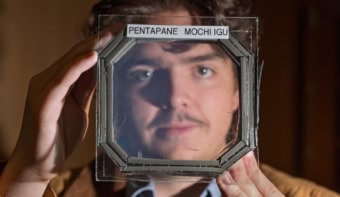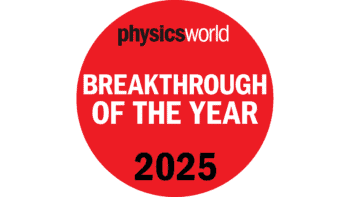
A new transition-metal oxide crystal that reversibly and repeatedly absorbs and releases oxygen could be ideal for use in fuel cells and as the active medium in clean energy technologies such as thermal transistors, smart windows and new types of batteries. The “breathing” crystal, discovered by scientists at Pusan National University in Korea and Hokkaido University in Japan, is made from strontium, cobalt and iron and contains oxygen vacancies.
Transition-metal oxides boast a huge range of electrical properties that can be tuned all the way from insulating to superconducting. This means they can find applications in areas as diverse as energy storage, catalysis and electronic devices.
Among the different material parameters that can be tuned are the oxygen vacancies. Indeed, ordering these vacancies can produce new structural phases that show much promise for oxygen-driven programmable devices.
Element-specific behaviours
In the new work, a team of researchers led by physicist Hyoungjeen Jeen of Pusan and materials scientist Hiromichi Ohta in Hokkaido studied SrFe0.5Co0.5Ox. The researchers focused on this material, they say, since it belongs to the family of topotactic oxides, which are the main oxides being studied today in solid-state ionics. “However, previous work had not discussed which ion in this compound was catalytically active,” explains Jeen. “What is more, the cobalt-containing topotactic oxides studied so far were fragile and easily fractured during chemical reactions.”
The team succeeded in creating a unique platform from a solid solution of epitaxial SrFe0.5Co0.5O2.5 in which both the cobalt and iron ions bathed in the same chemical environment. “In this way, we were able to test which ion was better for reduction reactions and whether or not it sustained its structural integrity,” Jeen tells Physics World. “We found that our material showed element-specific reduction behaviours and reversible redox reactions.”
The researchers made their material using a pulsed laser deposition technique, ideal for the epitaxial synthesis of multi-element oxides that allowed them to grow SrFe0.5Co0.5O2.5 crystals in which the iron and cobalt ions were randomly located in the crystal. This random arrangement was key to the material’s ability to repeatedly release and absorb oxygen, they say.
“It’s like giving the crystal ‘lungs’ so that it can inhale and exhale oxygen on command,” says Jeen.
Stable and repeatable
This simple breathing picture comes from the difference in the catalytic activity of cobalt and iron in the compound, he explains. Cobalt ions prefer to lose and gain oxygen and these ions are the main sites for the redox activity. However, since iron ions prefer not to lose oxygen during the reduction reaction, they serve as pillars in this architecture. This allows for stable and repeatable oxygen release and uptake.
Until now, most materials that absorb and release oxygen in such a controlled fashion were either too fragile or only functioned at extremely high temperatures. The new material works under more ambient conditions and is stable. “This finding is striking in two ways: only cobalt ions are reduced, and the process leads to the formation of an entirely new and stable crystal structure,” explains Jeen.

Aluminium oxide reveals its surface secrets
The researchers also showed that the material could return to its original form when oxygen was reintroduced, so proving that the process is fully reversible. “This is a major step towards the realization of smart materials that can adjust themselves in real time,” says Ohta. “The potential applications include developing a cathode for intermediate solid oxide fuel cells, an active medium for thermal transistors (devices that can direct heat like electrical switches), smart windows that adjust their heat flow depending on the weather and even new types of batteries.”
Looking ahead, Jeen, Ohta and colleagues aim to investigate the material’s potential for practical applications.
They report their present work in Nature Communications.



